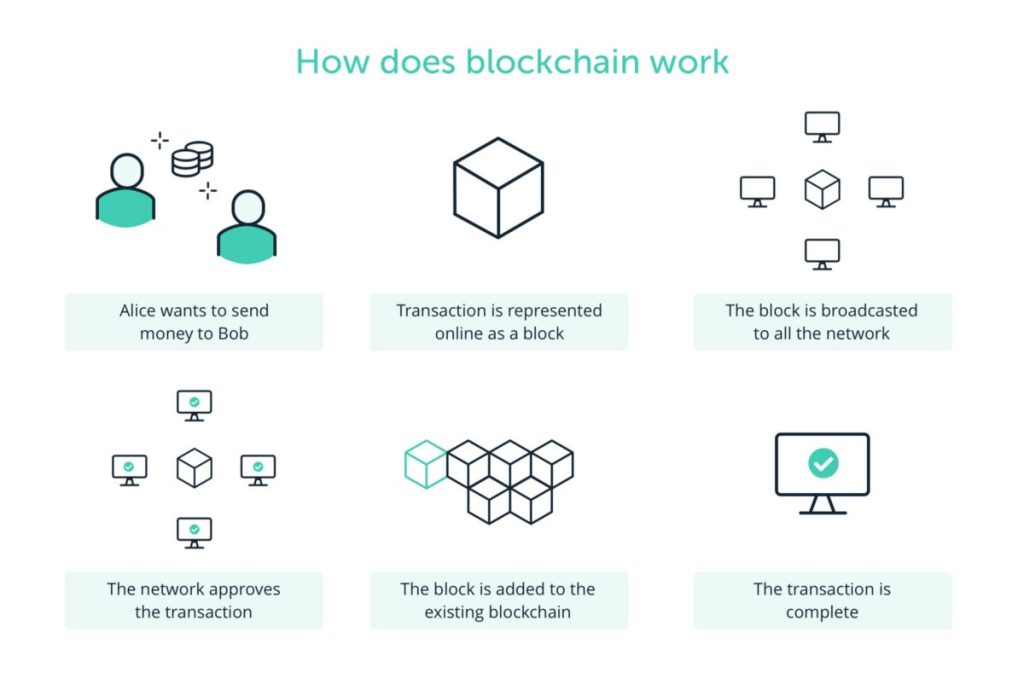The consensus mechanism is the central element of any blockchain and guarantees the security and trustworthiness of the network.
Proof-of-work, proof-of-stake, or rather proof-of-authority? To guarantee the trustworthiness of a blockchain, participants need to reach an agreement on the status of the network. To achieve this, many new consensus processes have been developed over the years. In this article, we take a closer look at what constitutes a consensus mechanism and why it is critical to the functioning of any blockchain.
Blockchain technology has been around since 2009 when the pseudonymous figure Satoshi Nakamoto launched the Bitcoin blockchain. What started as an experiment is now a global movement. Because of this growth, purpose-built hardware is now required to mine Bitcoin using the consensus mechanism called proof-of-work.
In the past, mining was possible on your own computer. First computer processors were sufficient, then you had to upgrade to graphics cards. Today, mining only pays off if you’re a professional farm with cheap electricity.
In the case of Bitcoin, a lot of electricity is required for mining via proof-of-work. This is because specialized mining devices expend computational power to solve an algorithm. The algorithm is called Sha-256 and if the solution is successful, a so-called block reward is paid out – and that reward is Bitcoin.
Due to the high energy consumption, many blockchains are now moving away from proof-of-work as the preferred consensus mechanism. With the impending update “The Merge”, Ethereum will no longer be dependent on proof-of-work. Consensus will then be reached through a different method, the so-called proof-of-stake.
But what exactly is the consensus mechanism, and why is it necessary? Let’s take a closer look at how blockchains work.
This is how the blockchain works
The word consensus means “agreement”. More specifically, it means the unanimous op18inion of people on a question. It represents the central element of every blockchain.
In a blockchain, transactions are stored in blocks by so-called validators. These then form a chain that continues indefinitely. Hence the name “blockchain”. A blockchain is a public, distributed database maintained by an independent community of computers around the world.
This independent community forms a peer-to-peer network managed by nodes and validators. They confirm the status of the blockchain. In order to guarantee that the database is not tampered with, the majority of all participants must recognize the same status of the blockchain: find a consensus.
A consensus mechanism is therefore an algorithm that achieves agreement on the status of a blockchain between its participants. These mechanisms are used to ensure that all participants have an identical copy of the database.
In this case, the network can only be overturned if the majority agrees to the same manipulated status, referred to as a 51% attack. This is a danger, especially for small proof-of-work blockchains, since you can rent computing power on certain websites.
Partly due to high energy consumption and 51% attacks, other consensus methods have been developed in recent years. Some have been more successful than others. As yet, the perfect consensus procedure does not exist.
The most well-known consensus procedures
Proof of Work
Proof-of-work (POW) is the oldest consensus method. This is where consensus is achieved through computational power. Participants are presented with a complex arithmetic problem that they have to solve using hardware. They receive a reward for the use of resources (hardware and energy). There currently is a move away from PoW, mainly due to the high energy consumption. Well-known blockchains based on POW are Ethereum, Bitcoin, and Monero.
Proof of Stake
Proof-of-stake (POS) is probably the most popular consensus mechanism after POW. It stands for “proof of stake” because consensus is reached here by the assets provided and the duration of the provision. Proof-of-stake was launched in 2012 in response to Bitcoin’s high energy consumption. Since there is no mining at POS, it is not possible to leverage the network with computing power. Attackers would have to acquire more than half of the circulating coins to do this. Well-known examples of proof-of-stake blockchains are Solana and Avalanche.
Delegated Proof of Stake
DPOS is a well-known advancement of proof-of-stake. Here delegates are democratically elected who are responsible for certain tasks in the network. Tasks include validating blocks and confirming the status of the blockchain. The voting right of the voters is usually weighted according to the number of tokens. Blockchains like Cardano, EOS, Tron, and Cosmos make use of DPOS.
Lesser-known consensus mechanisms
Proof of Person
Proof-of-person is a lesser-known consensus mechanism. Here network participants prove that they are real people thus authorized to participate in the network activity. This proof can be provided by certain tasks or even by biometric data. This is particularly advantageous for decentralization since each person can only be represented once in the network. Blockchains based on some form of POP include Idena and Humanode.
Proof of Authority
Proof-of-authority is used to select trustworthy participants who are then allowed to carry out certain tasks. The selection usually depends on the reputation of the participants. Participants undergo an application process before they are considered as validators for the blockchain. The process is usually based on the real identity of the applicant. This ensures a high level of trustworthiness for POA networks, but at the same time involves security risks. The most well-known example of a proof-of-authority blockchain is BNB Chain, formerly known as Binance Smart Chain.
Support CryptoCaster with any amount of Bitcoin by copying and pasting our Unstoppable Domain; villagewest.crypto in your sending wallet or crypto coin exchange.
Your contribution support will help in our growth, coverage, and global presence. CryptoCaster is a decentralized publisher “Covering a Global Evolution Re-defining Mediums Of Exchange”. We will continue to upgrade and create impactful sections to our lineup.
Any amount, as often as you can contribute will be greatly appreciated.
Every contribution, however big or small, is so valuable for our future. Thank you for your consideration and support!
Member of Global Meta Media Consortium℠ – www.g2mc.world
Proof-of-work vs. proof-of-stake: which is best?
Although proof-of-work is considered the most secure consensus algorithm, many blockchains now prefer proof-of-stake. This mainly has to do with environmental factors, but the scalability of blockchains also plays a major role. The Bitcoin network, as digital gold, can get by with a low transaction volume and choose security as the first priority, but the situation is different with networks such as Ethereum, which are fundamentally dependent on fast and cheap transactions.
Therefore, proof-of-stake is the more attractive consensus method for these blockchains. But there are also some weaknesses here. The main criticism is that it makes the “rich richer” and usually creates centralized networks. For example, Ethereum network validators need 32 ETH (approximately $87,000) to be approved. This creates a major barrier to entry for newcomers and small investors, while investors with the necessary capital easily collect staking rewards, widening the gap between small and large investors.
The blockchain trilemma applies to the choice of consensus procedure. This states that a blockchain cannot meet the desired qualities of decentralization, scalability, and security at once, since one of the factors can only be achieved at the expense of the other. As a rule, scalable blockchains are not very decentralized and secure blockchains are rather slow. The only question is– which of the desired qualities do you prefer? ![]()
Please Read Essential Disclaimer Information Here.
© 2024 Crypto Caster provides information. CryptoCaster.world does not provide investment advice. Do your research before taking a market position on the purchase of cryptocurrency and other asset classes. Past performance of any asset is not indicative of future results. All rights reserved.
Contribute to CryptoCaster℠ Via Metamask or favorite wallet. Send Coin/Token to Addresses Provided Below.
Thank you!
BTC – bc1qgdnd752esyl4jv6nhz3ypuzwa6wav9wuzaeg9g
ETH – 0x7D8D76E60bFF59c5295Aa1b39D651f6735D6413D
MATIC – 0x7D8D76E60bFF59c5295Aa1b39D651f6735D6413D
LITECOIN – ltc1qxsgp5fykl0007hnwgl93zr9vngwd2jxwlddvqt
Support CryptoCaster with any amount of Bitcoin by copying and pasting our Unstoppable Domain; villagewest.crypto in your sending wallet or crypto coin exchange.
Your contribution support will help in our growth, coverage, and global presence. CryptoCaster is a decentralized publisher “Covering a Global Evolution Re-defining Mediums Of Exchange”. We will continue to upgrade and create impactful sections to our lineup.
Any amount, as often as you can contribute will be greatly appreciated.
Every contribution, however big or small, is so valuable for our future. Thank you for your consideration and support!
Member of Global Meta Media Consortium℠ – www.g2mc.world







